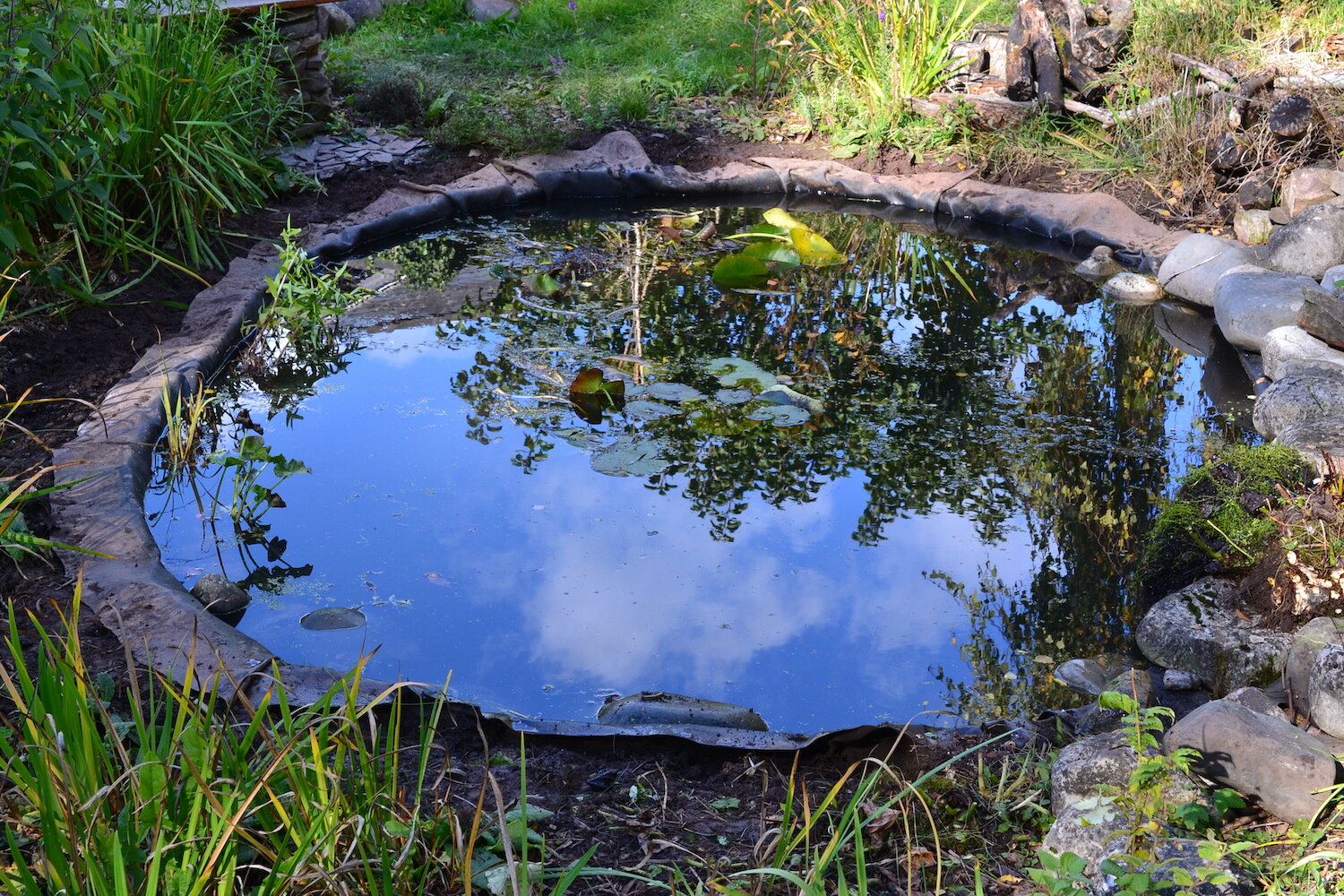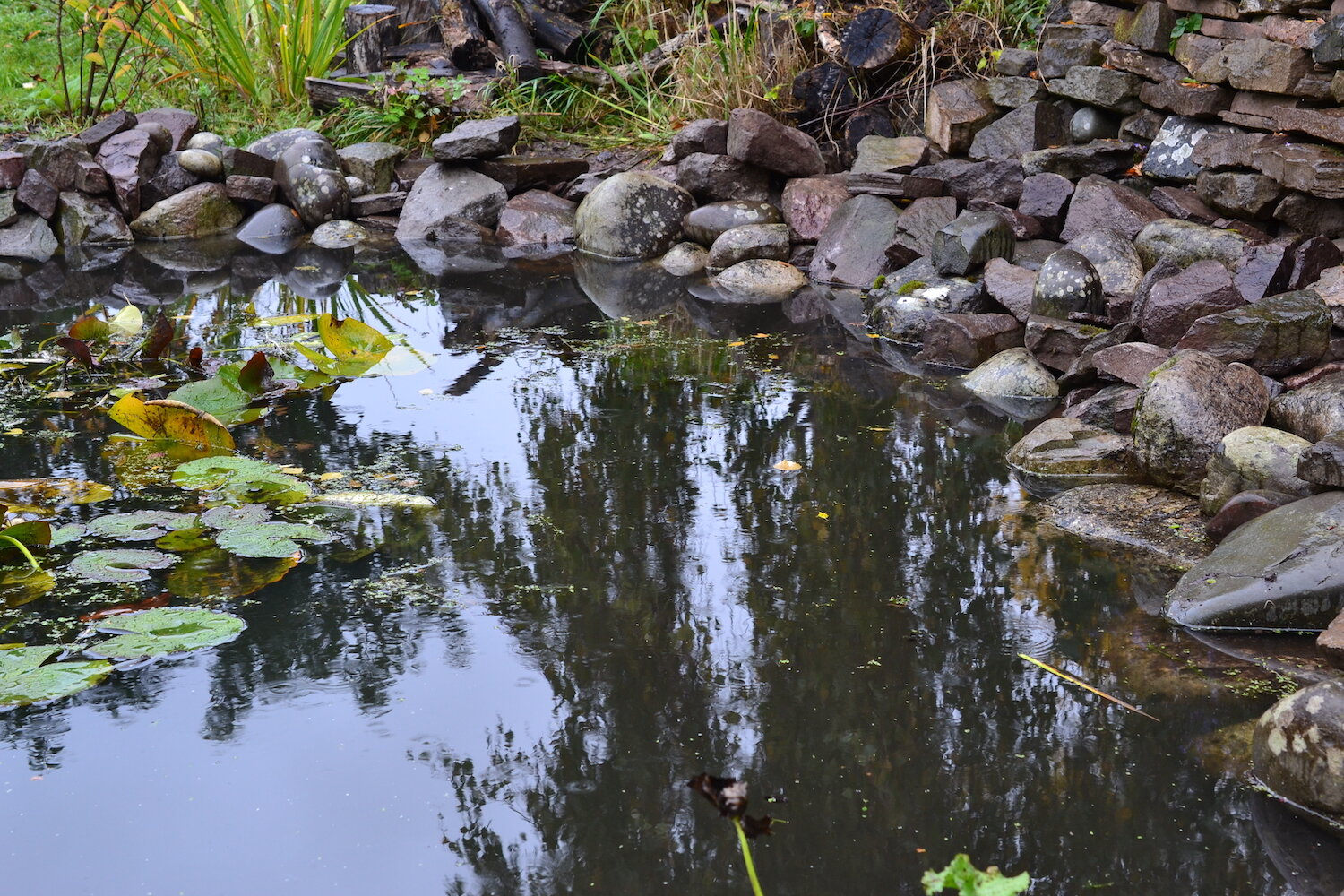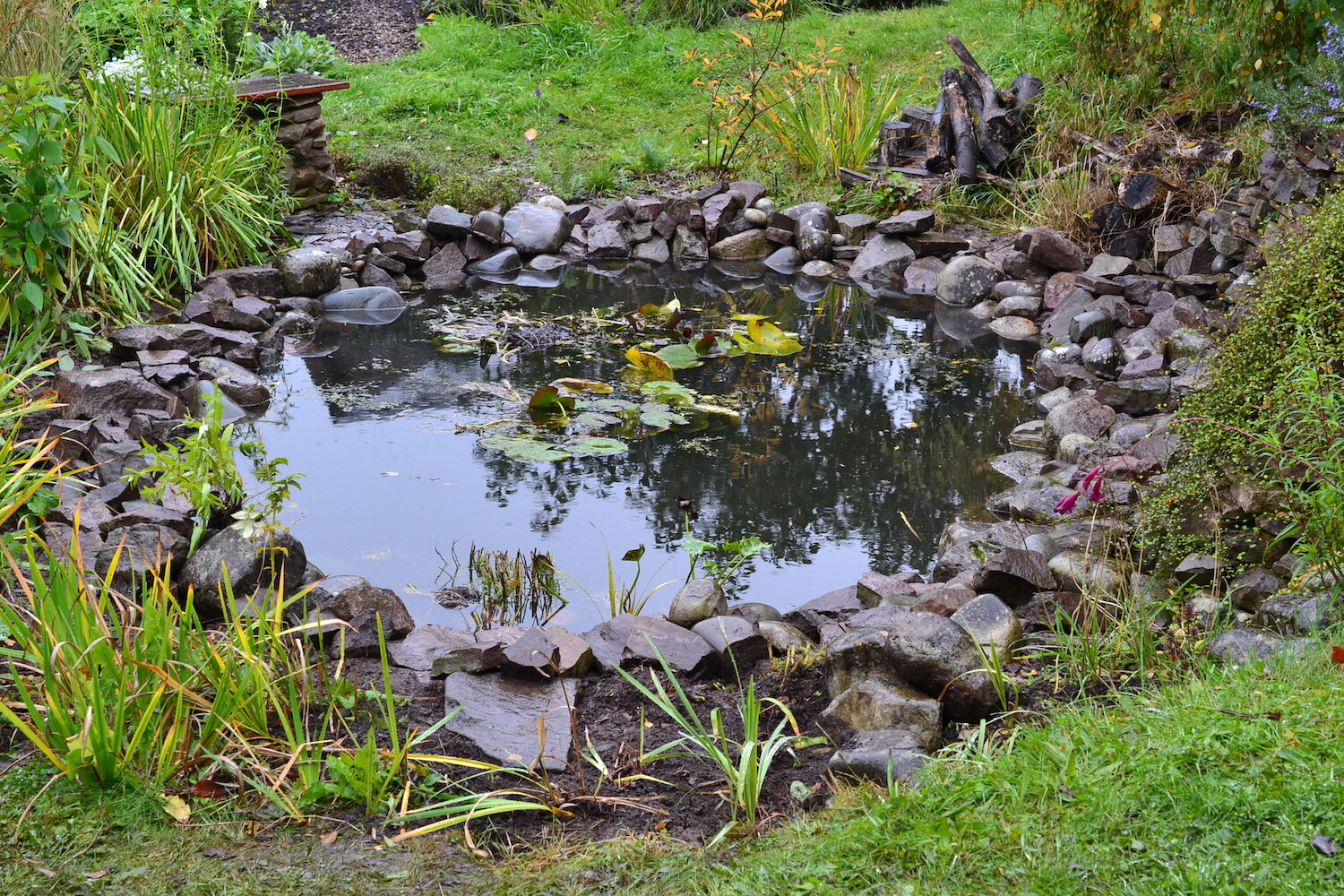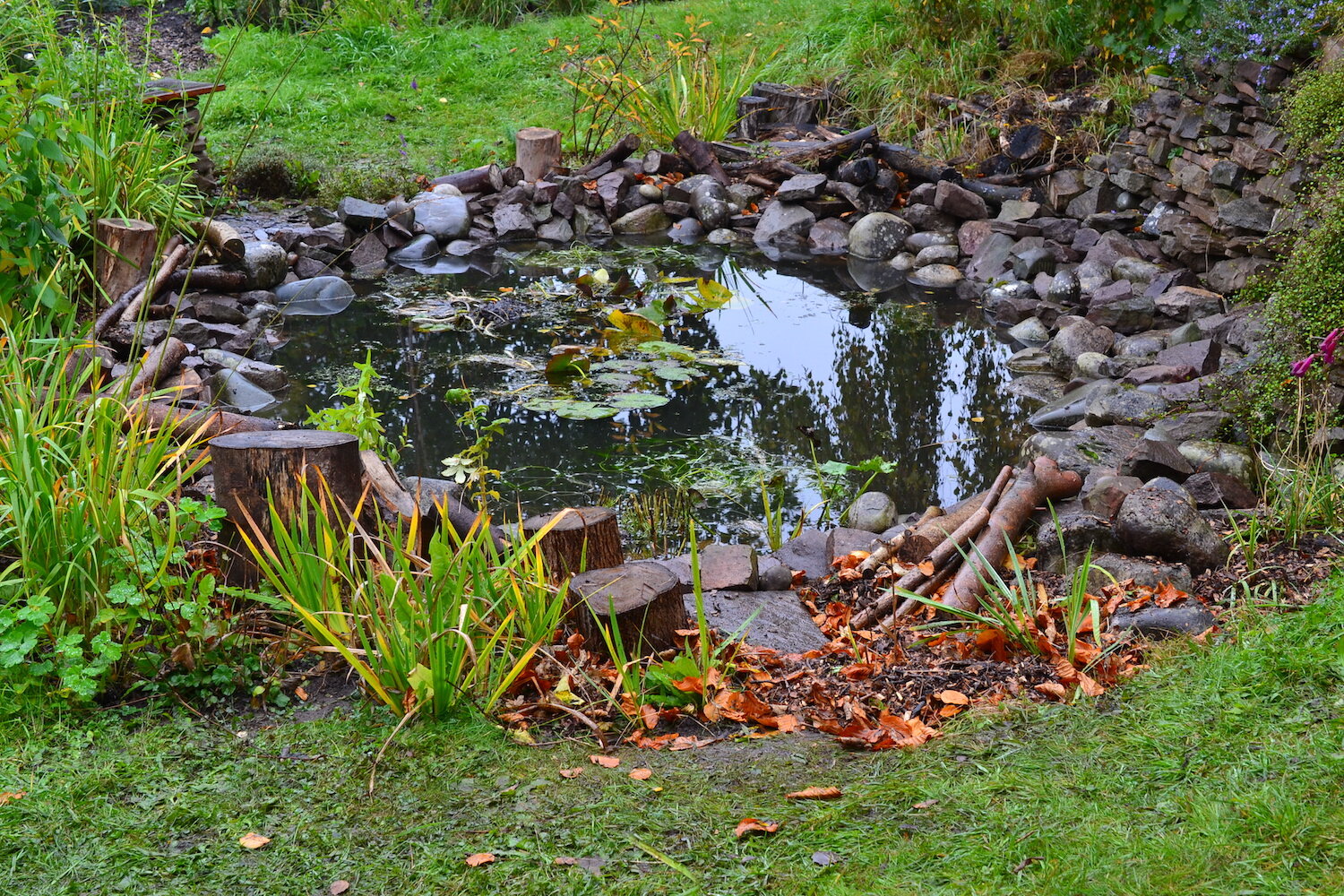Our wildlife pond transformation
Amongst all the cut flowers, I make sure our garden also offers habitats for wildlife. We’re really lucky to have newts, frogs, toads, and insects visiting so we recently re-designed our pond to make it more creature-friendly.
Below is how it looked in 2017 when we moved in - yikes. There were two ponds - a larger lower pond and a smaller upper pond (just beyond the cat) with a rock cascade in between. They were originally built as ornamental fish ponds, sometime in the 1980s or 90s and so were decorated with a flagstone edging. In the intervening time, the ponds were largely neglected, so by the time we arrived, weeds had taken over to such an extent that only a small puddle of water was left in the large pond for the frogs and toads that continued visiting in the mating season.
The main culprit taking over the ponds was Crassula helmsii (aka swamp stonecrop / New Zealand pigmyweed) which is an introduced invasive aquatic that will quickly overwhelm a small domestic pond in one season and is a real threat to wild wetlands. It’s banned from sale in the UK since 2014 but plantlife.org.uk says it’s sometimes still sold here, mis-labeled as C. recurva, Tillaea recurva, or T. helmsii - make sure you don’t buy it!
It’s problematic because it re-grows from small fragments that break off the main stems making it virtually impossible to eradicate - the only way to get rid of it completely is to replace your pond. That’s not something we want to do right now, so we’re just keeping on top of the growth by removing it regularly. It’s the moss-like plants growing out of the water in the photo below.
In our first summer, we cleared weeds out of the big pond, filled in the top pond, replaced the cascade with a dry stone wall, built a bench and added plants and hiding places for critters. The flagstones were left in place but we added a few rock ramps and a wooden ramp for small animals.
This year we replaced the flags with more natural rocky edging, giving animals and insects even more shelter and easier access into and out of the water. We first added heavy rocks to hold the pond liner in place and then filled in the gaps with lots of smaller rocks to form ramps and mini beaches. To complete the pond-edge habitat, we added leaf litter, branches and logs to provide places for animals to hide, find food and hibernate.





We’ve really loved having this pond in our garden and all of the wildlife that it attracts. One of our favourite things to do is to sit at the pond’s edge in the spring and count the number of newts we can see below the water. It’s definitely worth all the effort!